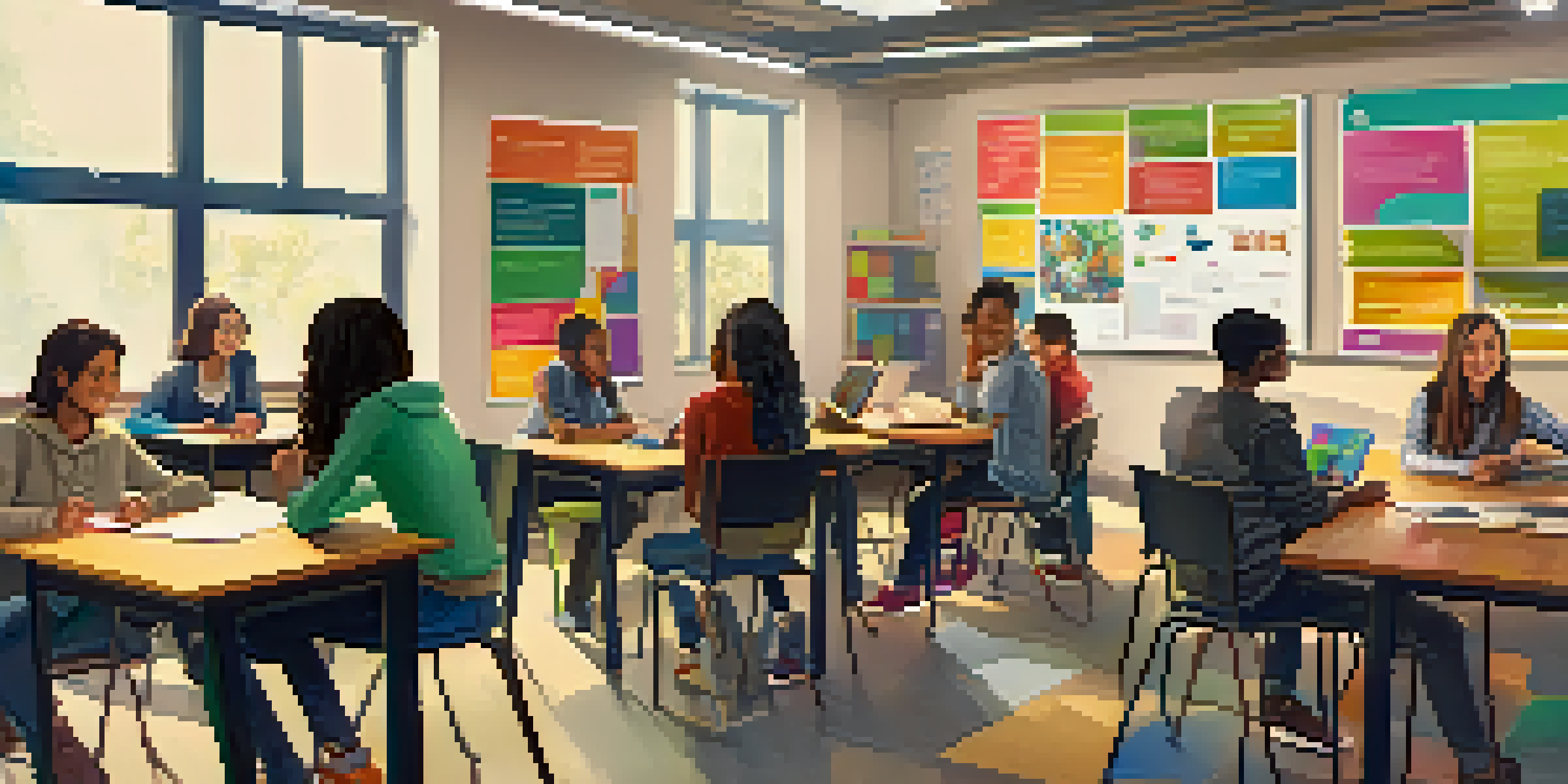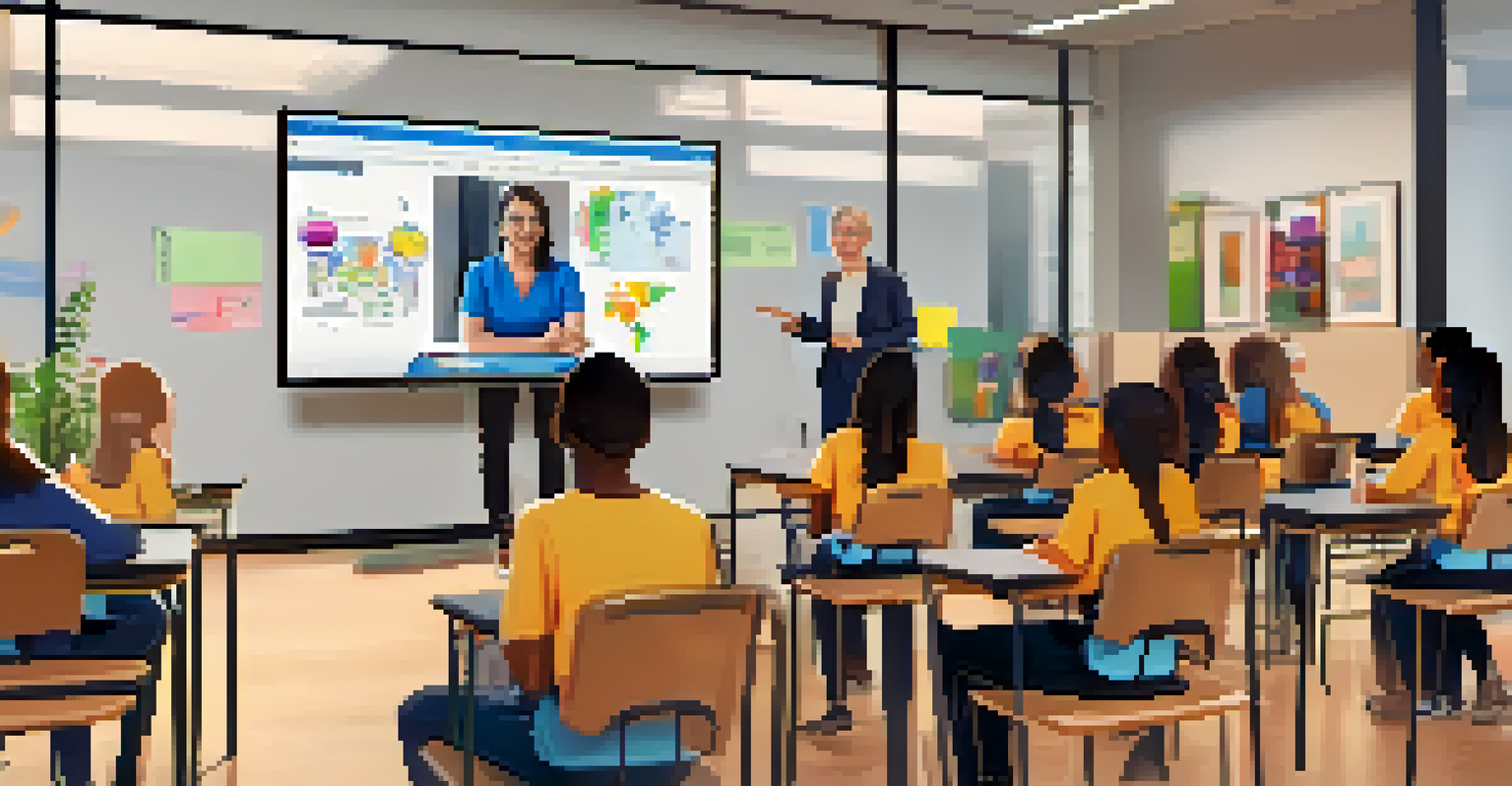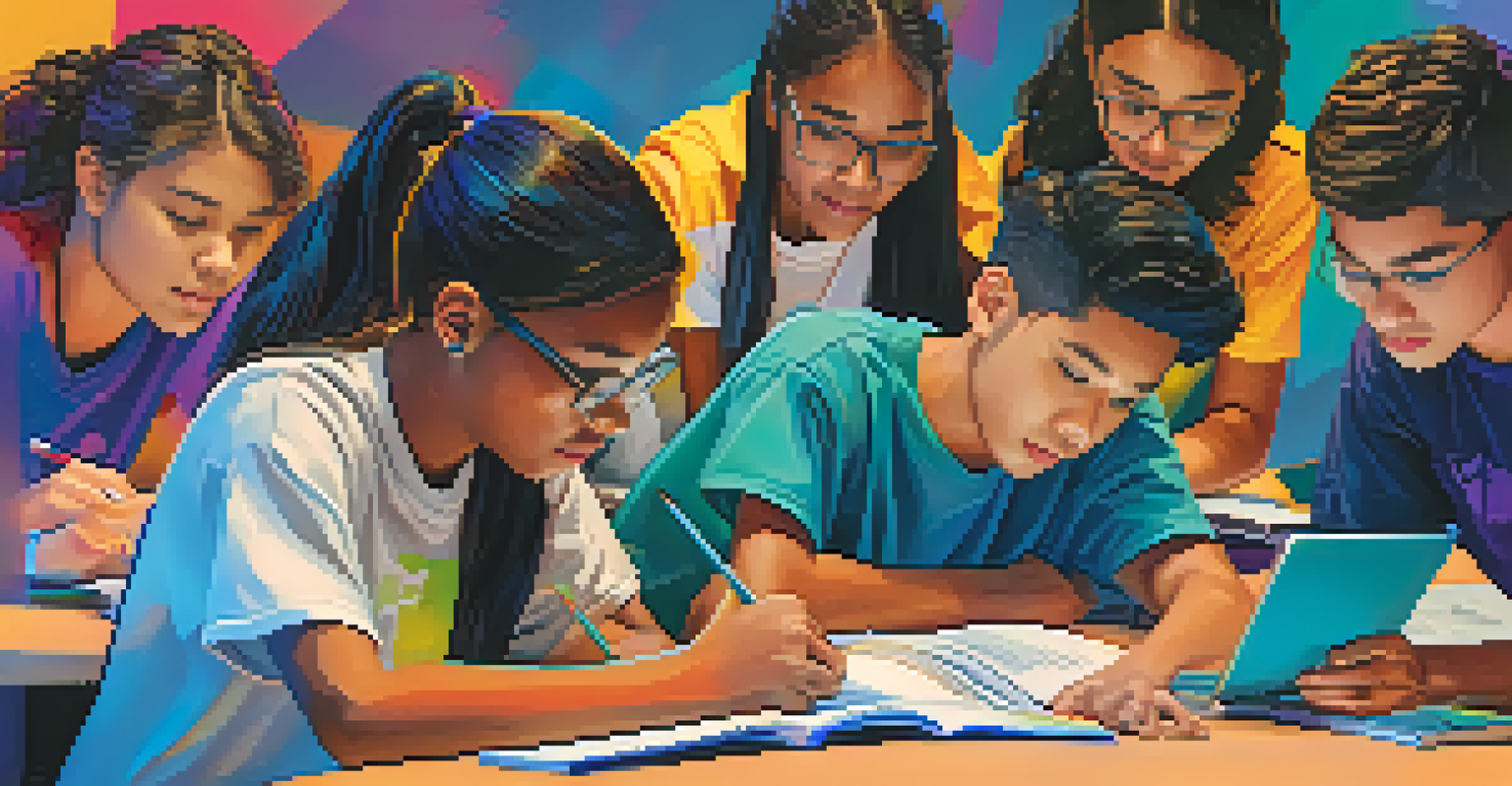Creating a Digital Classroom: Roles and Responsibilities

Understanding the Digital Classroom Concept
A digital classroom is an interactive learning environment that leverages technology to enhance education. It allows both teachers and students to connect in innovative ways, breaking the traditional classroom walls. In this space, learning can happen anytime and anywhere, making education more accessible and flexible.
Technology will never replace great teachers, but technology in the hands of great teachers is transformational.
Imagine a vibrant virtual space where students can collaborate on projects, access resources, and communicate seamlessly with their peers and educators. This environment not only fosters engagement but also prepares students for a tech-driven world. The digital classroom blends various multimedia tools, such as videos, podcasts, and interactive quizzes, to cater to different learning styles.
Ultimately, a digital classroom is about creating a community of learners who can thrive in a modern educational landscape. By embracing technology, educators can cultivate an enriching atmosphere that inspires curiosity and creativity among students.
The Role of Educators in a Digital Classroom
Educators are the backbone of the digital classroom, guiding students through their learning journeys. They design engaging lessons, facilitate discussions, and provide feedback, all while adapting to the needs of their students. By utilizing digital tools, teachers can create interactive and personalized experiences that resonate with learners.

In addition to traditional teaching, educators must be tech-savvy and open to experimenting with new tools and platforms. This adaptability allows them to enhance their teaching methods and keep up with the ever-evolving educational technology landscape. Educators also play a crucial role in fostering a supportive online community, encouraging collaboration and communication among students.
Empowering Students in Learning
In a digital classroom, students actively engage in their education, fostering independence and critical thinking.
Ultimately, the effectiveness of a digital classroom hinges on the educator's ability to connect with their students. By building strong relationships and creating a positive learning environment, teachers can inspire students to take ownership of their education and explore new ideas.
Students: Active Participants in Learning
In a digital classroom, students are not just passive recipients of information; they are active participants in their learning process. This shift empowers them to take charge of their education, encouraging independence and critical thinking. Students engage with content in various ways, from participating in discussions to collaborating on projects.
The only thing that interferes with my learning is my education.
Moreover, technology allows students to access a wealth of resources beyond the classroom. They can explore topics that interest them, conduct research, and even connect with experts in their fields. This autonomy fosters a sense of ownership and responsibility, motivating students to set and achieve their learning goals.
Engagement in a digital classroom also means being respectful and supportive of peers. By collaborating and sharing knowledge, students learn the value of teamwork and develop essential skills for their future careers. This interactive environment helps students build confidence and prepares them for real-world challenges.
The Importance of Support Staff in Digital Learning
Support staff play a vital role in the success of a digital classroom, ensuring that everything runs smoothly behind the scenes. From IT specialists who manage technology infrastructure to instructional designers who help create engaging content, their contributions are invaluable. They provide the necessary technical support that allows educators and students to focus on learning.
Additionally, support staff often assist with training educators on new tools and platforms, ensuring everyone is equipped to make the most of digital resources. They help troubleshoot issues and provide ongoing maintenance, making technology a seamless part of the learning experience. This support enables educators to innovate and experiment without the fear of technical hiccups.
Key Role of Educators
Educators guide students through personalized learning journeys, adapting to their needs while fostering a supportive community.
Moreover, support staff can also play a role in student engagement by organizing virtual events and activities that complement the curriculum. By fostering a sense of community, they help create a welcoming digital environment where students feel connected and supported throughout their learning journey.
Parental Involvement in Digital Classrooms
Parents are crucial partners in the success of a digital classroom, providing support and encouragement to their children. Their involvement can take various forms, from monitoring homework to participating in online discussions. By staying engaged, parents can help reinforce the importance of education and motivate their children to excel.
In a digital learning environment, communication between educators and parents is essential. Regular updates and feedback can help parents understand their child's progress and address any challenges they may face. This collaboration fosters a supportive home environment that complements the learning taking place in the digital classroom.
Moreover, parents can also contribute by sharing their expertise and resources, enriching the learning experience for all students. When parents are actively involved, it creates a stronger sense of community and helps students feel more connected to their education.
The Role of Technology in Facilitating Learning
Technology serves as the backbone of a digital classroom, providing the tools necessary for effective learning. From learning management systems to video conferencing software, these resources create an interactive and engaging environment for both students and educators. The right technology can enhance lesson delivery, making learning more dynamic and enjoyable.
Moreover, technology enables personalized learning experiences. Students can progress at their own pace, accessing resources that cater to their individual needs and interests. This adaptability is particularly beneficial in a diverse classroom, where learners have varying backgrounds and learning styles.
Technology's Essential Support
Technology serves as the backbone of digital classrooms, enhancing learning experiences and enabling personalized education.
Additionally, technology fosters collaboration among students, allowing them to work together on projects and share ideas effortlessly. This connectivity helps break down geographical barriers and creates a global learning community, enriching the educational experience for everyone involved.
Assessing and Evaluating Learning in a Digital Classroom
Assessment in a digital classroom goes beyond traditional tests and quizzes; it incorporates various methods to gauge student understanding. Educators can use online assessments, peer evaluations, and self-reflections to provide a more comprehensive picture of student progress. This multifaceted approach encourages students to take an active role in their learning.
Moreover, digital tools can streamline the assessment process, allowing for immediate feedback and easier tracking of student performance. Educators can analyze data to identify trends and areas for improvement, adjusting their teaching strategies accordingly. This data-driven approach ensures that every student receives the support they need to succeed.

Ultimately, the goal of assessment in a digital classroom is to promote growth and development. By using diverse evaluation methods, educators can create a learning environment that celebrates achievements and encourages continuous improvement.
Challenges and Solutions in Digital Classrooms
While digital classrooms offer numerous benefits, they also come with their own set of challenges. Issues such as technology access, digital literacy, and student engagement can impact the effectiveness of online learning. Recognizing these obstacles is the first step toward finding effective solutions.
One common challenge is ensuring that all students have access to the necessary technology and internet connectivity. Schools and educators can work together to provide resources, such as loaner devices and Wi-Fi hotspots, to bridge the digital divide. Additionally, offering training sessions can help students and parents increase their digital literacy, ensuring everyone feels confident in using online tools.
Another significant challenge is maintaining student engagement in a virtual environment. Educators can implement interactive activities, gamify learning experiences, and encourage collaboration to keep students motivated. By fostering a sense of community and connection, teachers can create an engaging digital classroom that promotes active participation and enthusiasm for learning.